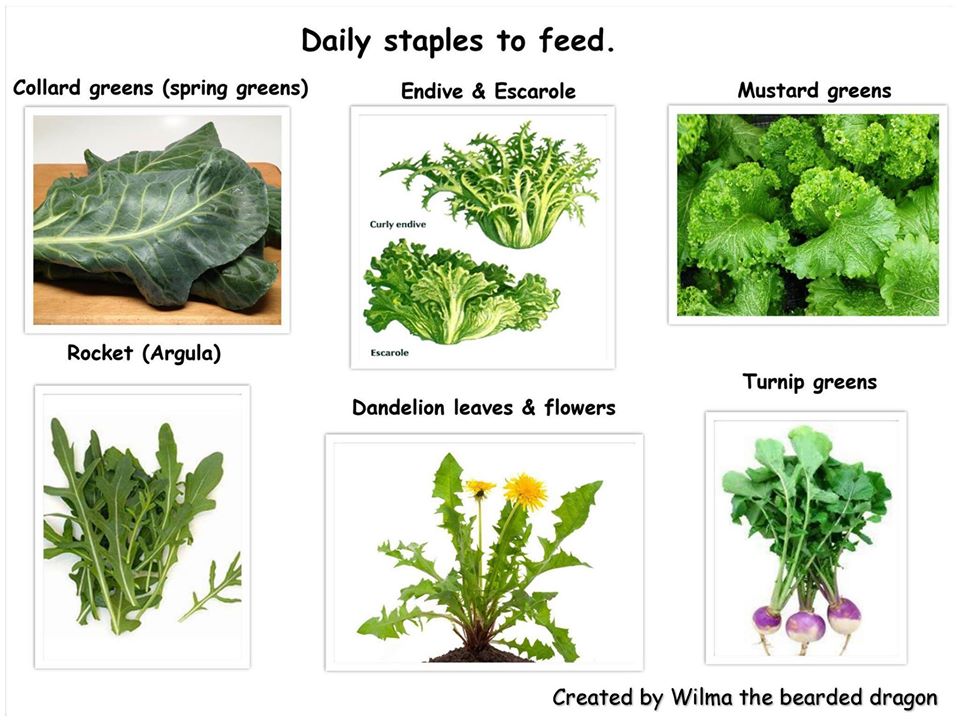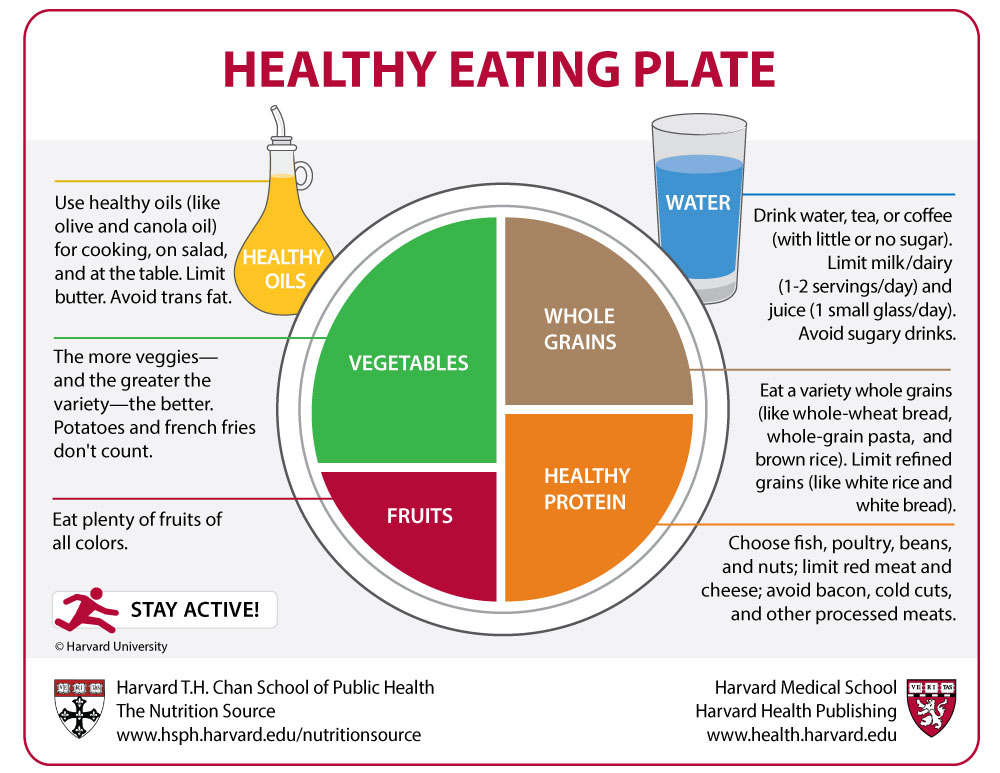karmakollector
Member
Hello all... I have been doing some research lately, when I came across some data online that seemed counter to advice that had been given on various beardie forums re: nutrition and staple greens.
In particular, I keep seeing two things as the "holy grail" of feeding recommendations:
1) This site: http://www.beautifuldragons.com/Nutrition.html
2) And images like this one:

The problem is, images like the second stem from data charts like the first, and I am finding that data chart has a lot of ambiguous and/or erroneous information in it:
a) Nearly every food is listed as "moderate oxalates," even when the actual oxalate counts are vastly different! For example, grapes are listed as "moderate oxalates" with 34 ppm... meanwhile bell peppers are listed as "moderate oxalates" at 1170 ppm! Does that make sense??
b) Speaking of bell peppers... I believe that 1170 ppm number is wildly inaccurate, and I don't know where it came from. In general, the highest sources of oxalates are found in leaves, not fruit (and even then, the worst culprits tend to be in the Amaranth family, including rhubarb, spinach, and chard.) The only fruit I know of with dangerously high oxalates is starfruit. (USDA database listed bell peppers at 40 ppm, or 4 mg / 100 g)
c) Which brings me to the recommended "staple greens" -- I am not so sure all of them should be recommended a "staples" because this implies they can make up the bulk of the diet and be fed every day, which could be problematic for some of them:
collard greens: This is what I was using as a staple feeder for my dragon, since it was the only one on the list I could find near me. BeautifulDragons recommends it, and notes it has "moderate oxalates"... but in doing my own research, I find conflicting information -- it is sometimes listed on the "avoid due to high oxalate" list for websites pertaining to kidney stones and gout. And when I looked at the USDA info on it, it is listed as 450 mg/100g (or 4500 ppm)... that's 20 times as much as kale! It's not far from the amount in chard, which is considered unhealthy. Now, part of the issue may be that people are also considering it in terms of a ratio against calcium, since calcium binds with it... but I feel that is not a safe way to look at things, because oxalates affect more than calcium absorption. They can also bind with other minerals (like potassium), and form crystals that lead to gout or kidney problems. (Could they have contributed to the kidney disease that killed my boy? I do not know... and I'm not saying collards aren't healthy in moderation, but maybe we shouldn't be calling them a staple green. They also contain goitrogens, just like non-recommended cruciferous vegetables such as cabbage and kale do! Because it's in that same Brassicaceae family)
dandelion greens - dandelion greens seem pretty decent at first glance of Ca and moderately low oxalates... but then I also know that (at least in humans) dandelion is a powerful diuretic, and can prevent oxalate excretion in urine. So, again, doesn't seem like something that is great to call a staple food.
and moderately low oxalates... but then I also know that (at least in humans) dandelion is a powerful diuretic, and can prevent oxalate excretion in urine. So, again, doesn't seem like something that is great to call a staple food.
endive/escarole - again, seems good at first glance, but it does have high levels of kaempferol, a goitrogenic compound that will interfere with thyroid functioning. Doesn't sound like a good daily staple
mustard greens appear to be similar to collard greens (but less calcium, so possibly worse?)
Really, the only ones that seem perfectly fine as staples are turnip greens and arugula, and maybe cactus, as well.
Meanwhile, other plants seem like they can be fed more frequently than was originally recommended (such as kale, cilantro, and romaine lettuce -- but I would definitely not make any of these a "staple" either!)
I get concerned that people are so widely spreading easy-to-digest information and recommendations like these which, although they do have some good information, also have some incorrect information and misleading recommendations (for example, I would advise to be sure to have a varied diet... and perhaps it is wise to balance low-oxalate, high-goitrogen greens with other moderate-oxalate but non-goitrogenic greens, all mixed together, along with a few other veggies, the best of which appear to be butternut or acorn squash, and maybe occasional green beans and sweet red pepper)
I have started my own nutrition chart and, while it's not as extensive as some of the others I have seen, I believe it to be more accurate. https://docs.google.com/spreadsheets/d/11YNZic04k92eaMUujpGRJA1wc1w8ulVyQTXDHS5v6oo/edit?usp=sharing
In particular, I keep seeing two things as the "holy grail" of feeding recommendations:
1) This site: http://www.beautifuldragons.com/Nutrition.html
2) And images like this one:

The problem is, images like the second stem from data charts like the first, and I am finding that data chart has a lot of ambiguous and/or erroneous information in it:
a) Nearly every food is listed as "moderate oxalates," even when the actual oxalate counts are vastly different! For example, grapes are listed as "moderate oxalates" with 34 ppm... meanwhile bell peppers are listed as "moderate oxalates" at 1170 ppm! Does that make sense??
b) Speaking of bell peppers... I believe that 1170 ppm number is wildly inaccurate, and I don't know where it came from. In general, the highest sources of oxalates are found in leaves, not fruit (and even then, the worst culprits tend to be in the Amaranth family, including rhubarb, spinach, and chard.) The only fruit I know of with dangerously high oxalates is starfruit. (USDA database listed bell peppers at 40 ppm, or 4 mg / 100 g)
c) Which brings me to the recommended "staple greens" -- I am not so sure all of them should be recommended a "staples" because this implies they can make up the bulk of the diet and be fed every day, which could be problematic for some of them:
collard greens: This is what I was using as a staple feeder for my dragon, since it was the only one on the list I could find near me. BeautifulDragons recommends it, and notes it has "moderate oxalates"... but in doing my own research, I find conflicting information -- it is sometimes listed on the "avoid due to high oxalate" list for websites pertaining to kidney stones and gout. And when I looked at the USDA info on it, it is listed as 450 mg/100g (or 4500 ppm)... that's 20 times as much as kale! It's not far from the amount in chard, which is considered unhealthy. Now, part of the issue may be that people are also considering it in terms of a ratio against calcium, since calcium binds with it... but I feel that is not a safe way to look at things, because oxalates affect more than calcium absorption. They can also bind with other minerals (like potassium), and form crystals that lead to gout or kidney problems. (Could they have contributed to the kidney disease that killed my boy? I do not know... and I'm not saying collards aren't healthy in moderation, but maybe we shouldn't be calling them a staple green. They also contain goitrogens, just like non-recommended cruciferous vegetables such as cabbage and kale do! Because it's in that same Brassicaceae family)
dandelion greens - dandelion greens seem pretty decent at first glance of Ca
endive/escarole - again, seems good at first glance, but it does have high levels of kaempferol, a goitrogenic compound that will interfere with thyroid functioning. Doesn't sound like a good daily staple
mustard greens appear to be similar to collard greens (but less calcium, so possibly worse?)
Really, the only ones that seem perfectly fine as staples are turnip greens and arugula, and maybe cactus, as well.
Meanwhile, other plants seem like they can be fed more frequently than was originally recommended (such as kale, cilantro, and romaine lettuce -- but I would definitely not make any of these a "staple" either!)
I get concerned that people are so widely spreading easy-to-digest information and recommendations like these which, although they do have some good information, also have some incorrect information and misleading recommendations (for example, I would advise to be sure to have a varied diet... and perhaps it is wise to balance low-oxalate, high-goitrogen greens with other moderate-oxalate but non-goitrogenic greens, all mixed together, along with a few other veggies, the best of which appear to be butternut or acorn squash, and maybe occasional green beans and sweet red pepper)
I have started my own nutrition chart and, while it's not as extensive as some of the others I have seen, I believe it to be more accurate. https://docs.google.com/spreadsheets/d/11YNZic04k92eaMUujpGRJA1wc1w8ulVyQTXDHS5v6oo/edit?usp=sharing

